

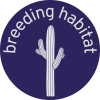





NATURAL HISTORY
IDENTIFICATION
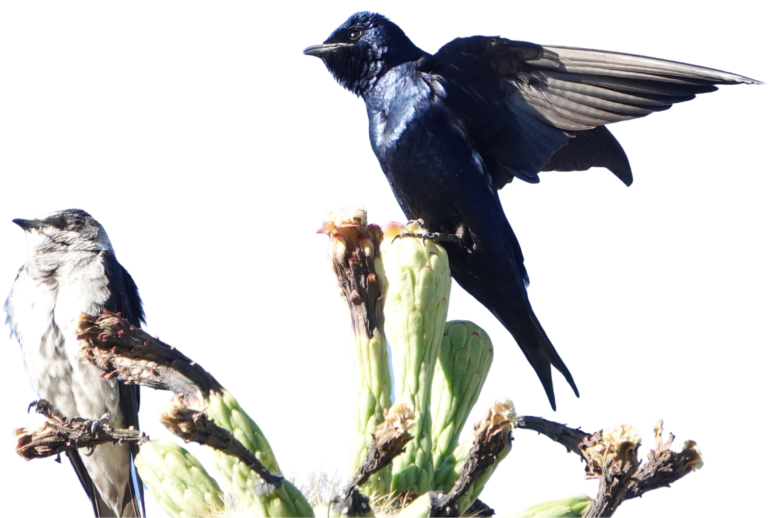
What is a Species? What is a Subspecies?
A species is a classification of organisms that have common characteristics and can reproduce to create fertile offspring. Subspecies are populations within a species that are geographically isolated from other populations and have different characteristics such as color, pattern, or behavior.
Each Purple Martin subspecies have different nesting behaviors, but they all are considered secondary cavity nesters- meaning that they do not create nesting cavities themselves. They instead rely on cavities created by other animals, such as woodpeckers. Eastern Purple Martins are dependent on human made nest boxes, western Purple Martins rely on cavities in trees, and desert Purple Martins use cavities in saguaros and cardons.
The three subspecies can also be differentiated by looking at the plumage of adult females. The adult females in the eastern subspecies have the darkest plumage while the desert subspecies has the brightest.
Body size is one additional way to differentiate the Purple Martin subspecies. On average, the western subspecies has the largest body size and the desert Purple Martin is the smallest.

DIET
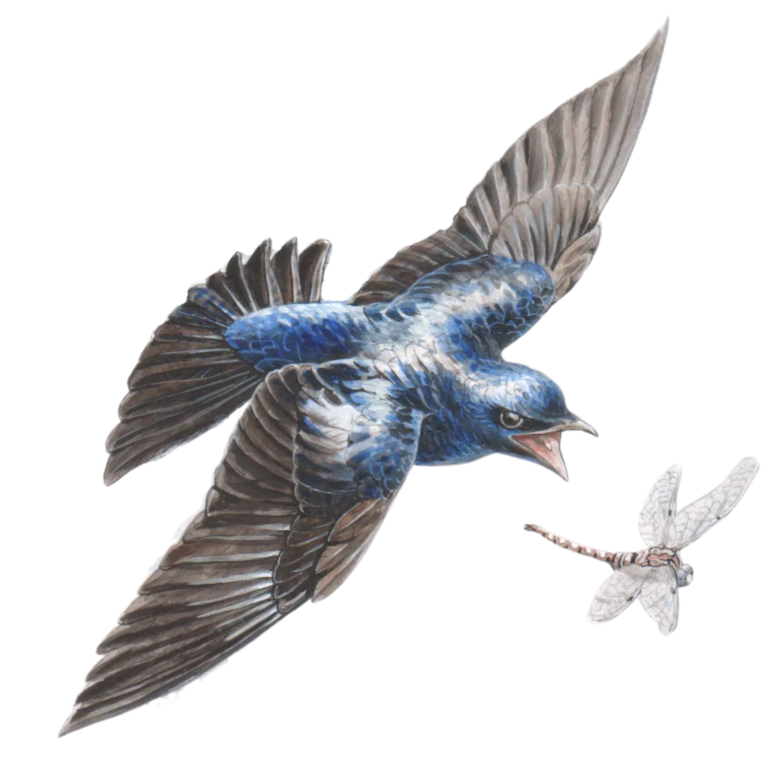
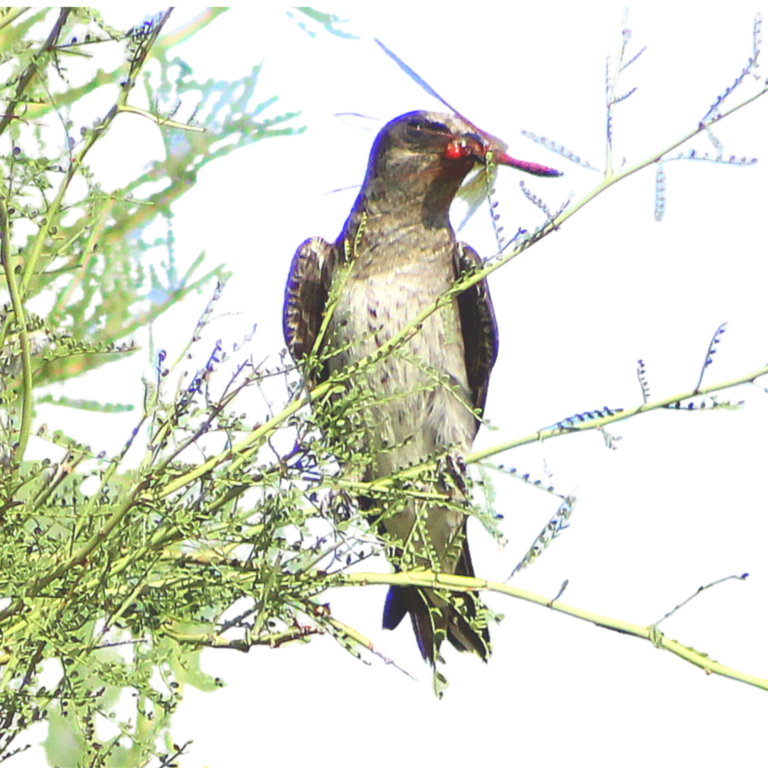
Purple Martins are aerial insectivores, which means they feed on insects while flying. They feeds on a variety of flying insects, including wasps and winged ants, and some bees; true bugs, flies, beetles, moths, and butterflies. Dragonflies seem to be they favorite item of their diet.
Here are a few common species of flying insects in the Sonoran Desert that could be a desert Purple Martin meal...
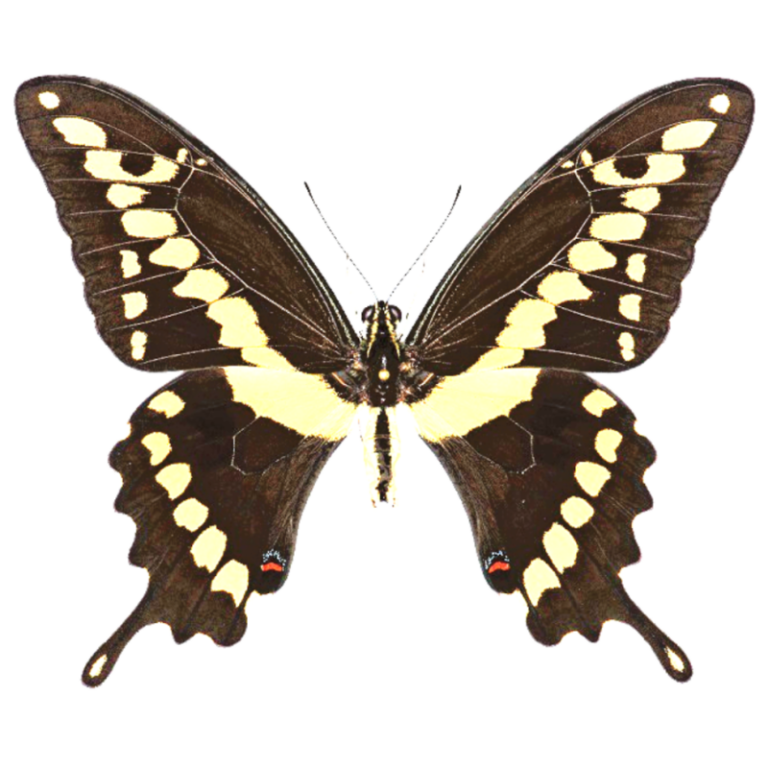
Western Giant Swallowtail
The Western Giant Swallowtail is a species of butterfly that is mostly black with pale yellow patches.
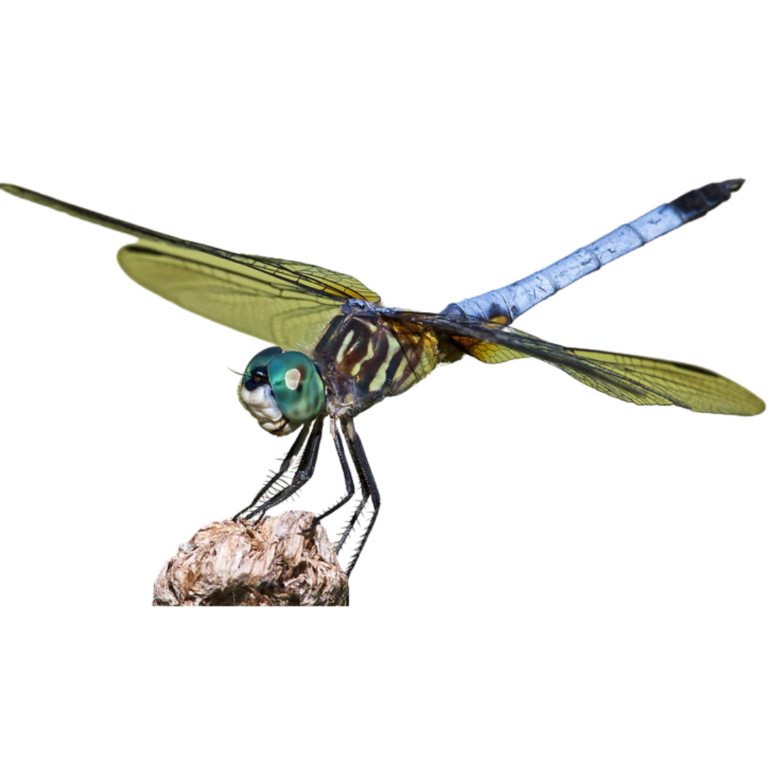
Blue Dasher
The Blue Dasher is a species of dragonfly that can be identified by its vibrant blue color, metallic green eyes, and yellow dashes along the thorax. They develop a frosty blue color with age.
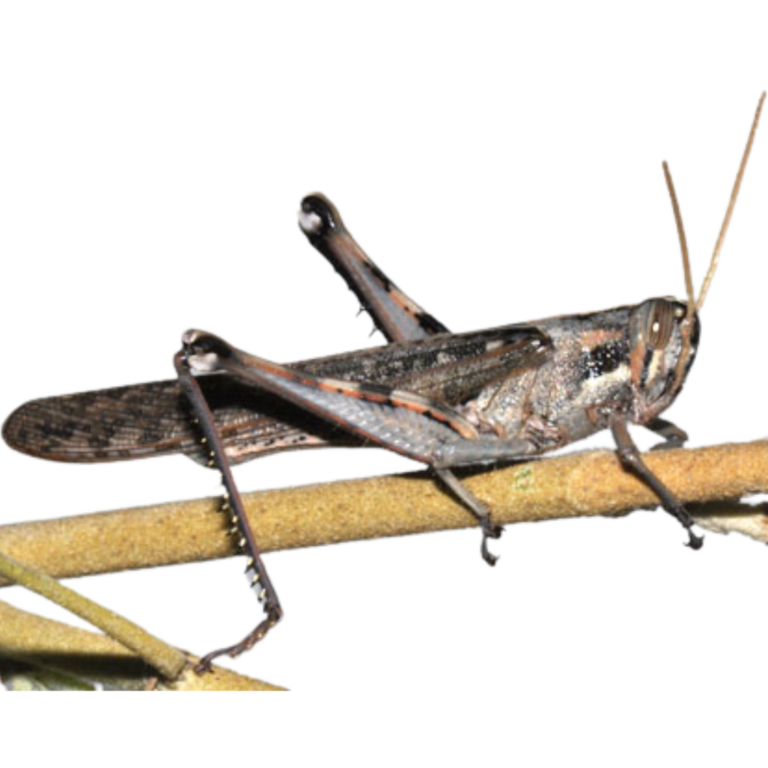
Gray Bird Grasshopper
The Gray Bird Grasshopper is a large grasshopper that reaches 4 to 7 centimeters in length. It is mostly gray brown and has a spotted and patched coloration.
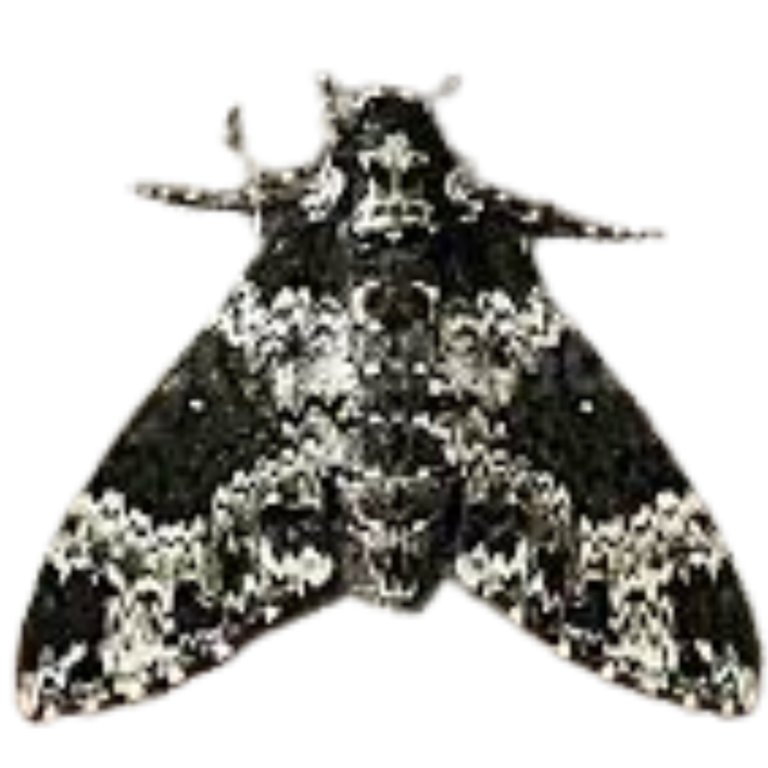
Rustic Sphinx
The Rustic Sphinx is a species of moth. It is white and dark brown and has a patchwork like pattern with zigzag black and white lines.
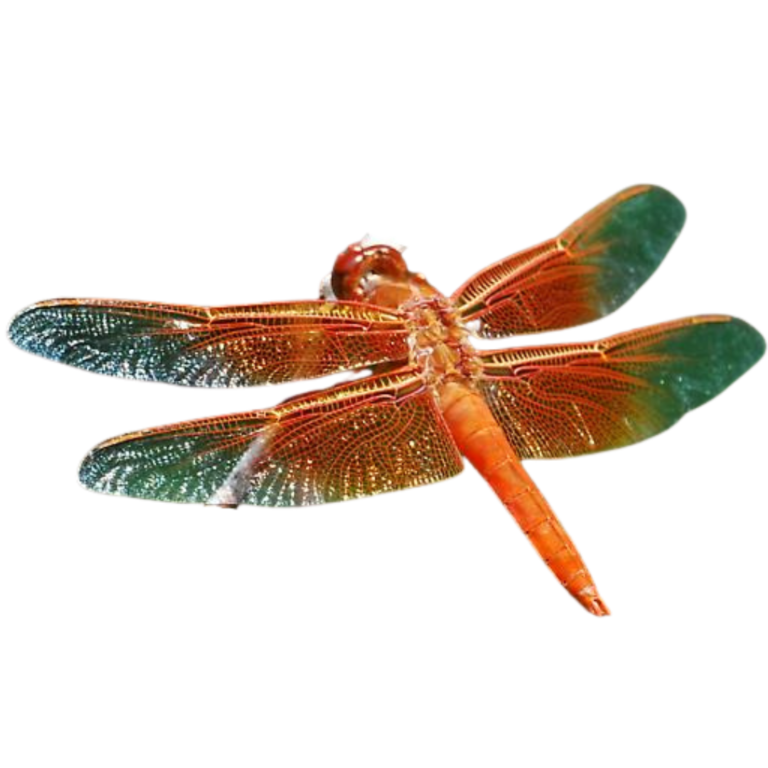
Flame Skimmer
The Flame Skimmer is a species of dragonfly that has a dark orange body and brown patches on the wings. They vary in size but are generally 5 to 8 centimeters in length.
BEHAVIOR
FRIENDS
Desert Purple Martins don’t excavate their own cavities for nesting, they rely on 2 species of woodpeckers to create their cavities for them! These 2 woodpecker species create a new nest every year, so their old nest can be occupied after they are gone. Without their help, desert Purple Martins would have no place to raise their young!
FOES
Desert Purple Martins need to be watchful for a variety of predators. Some predators specifically target nests in search of eggs and chicks while more agile predators can catch adults. Here are a few animals that might make a desert Purple Martin into a tasty meal.
NEIGHBORS
Desert Purple Martins aren’t the only ones living inside saguaro cavities. One saguaro can have many different cavities that could be used by multiple different species at the same time. Here are a few neighbors that desert Purple Martins could have in a saguaro.







